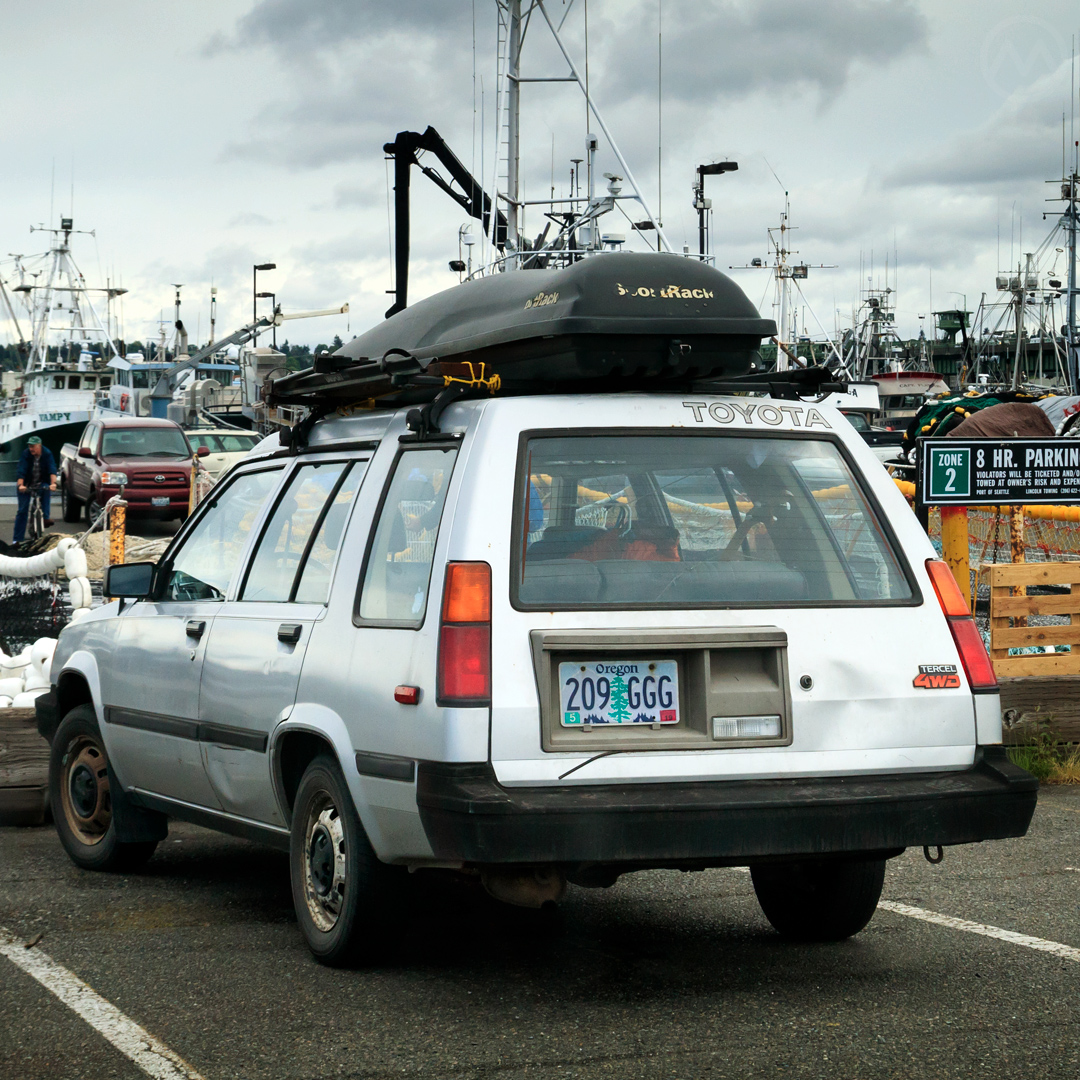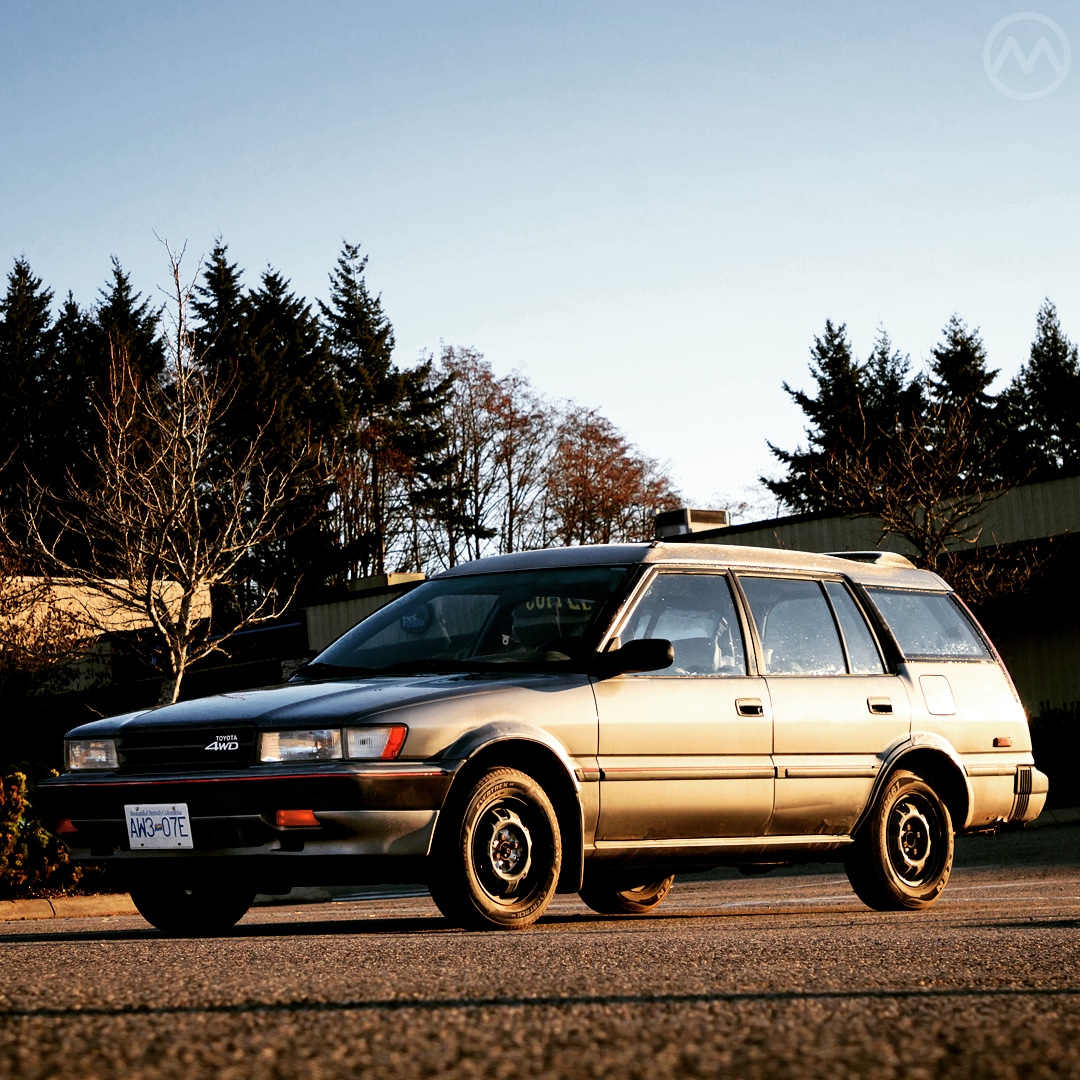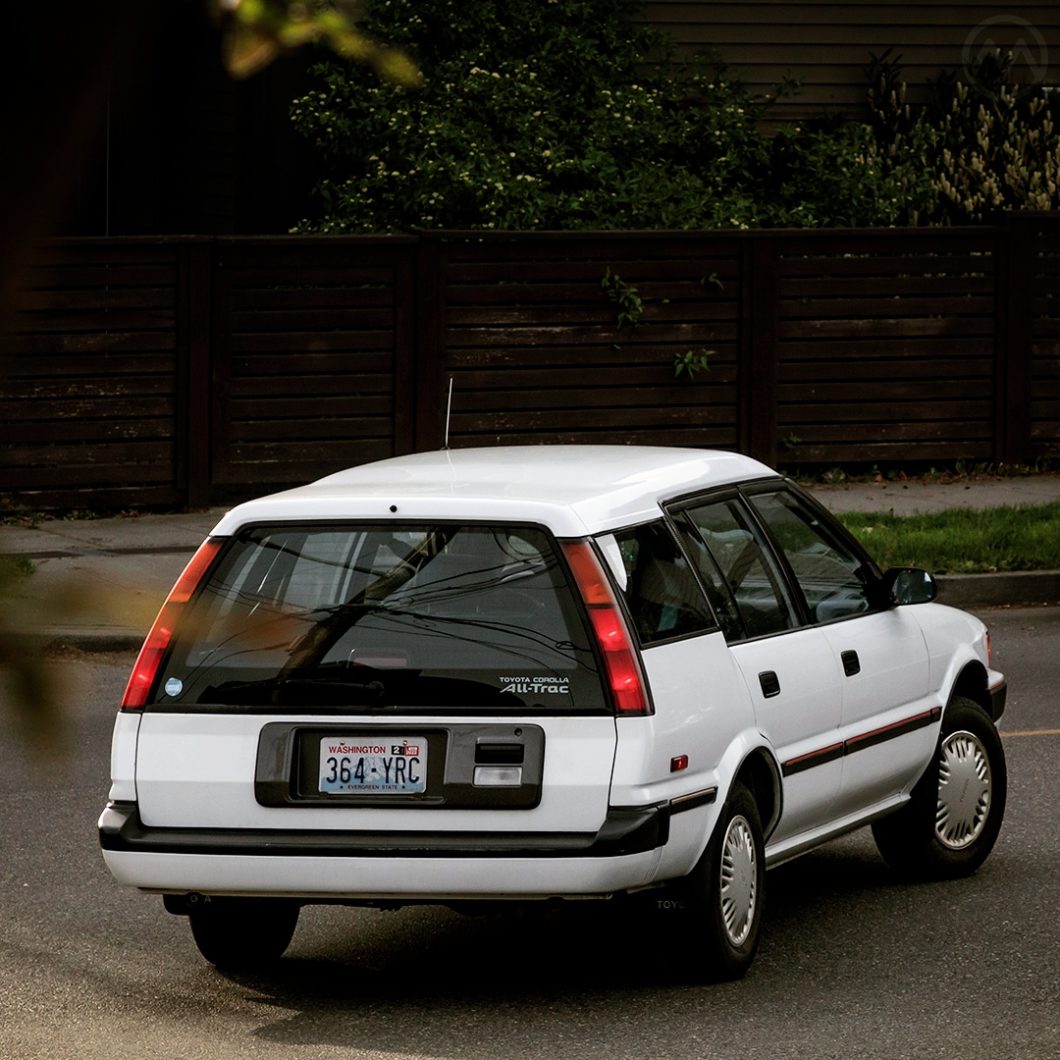Most Americans buy their cars off the lot, but in Japan built-to-order is the norm. Customers tailor what they want from a wide array of models and buy them from an equally wide array of dealer networks. That’s part of why there’s such a bewildering array of models and trims in Japan. This car is a Toyota Corolla All-Trac, but at home, it was a Toyota Sprinter Carib, a sibling to the Corolla but sold by a different sales channel.
The Sprinter and the Corolla had been twins for years by then, but the All-Trac was the rare result of a primarily JDM model heading across the Pacific.
The Many Toyota Stores
Toyota’s Sprinter was originally meant to be a slightly sportier version of the Corolla, sold at the Toyota Auto Store network, while the Corolla was sold at (appropriately) the Toyota Corolla Store network. While Toyota’s original dealership chain had been set up in 1950, the “Corolla store” dated to the introduction of the Publica in 1961, and was renamed when the original Corolla came online.
The “Toyota Auto Store” network was set up in 1967 to promote the Sprinter and later became the Toyota Vista store. The Vista store was further split into various smaller networks in 1998. The Sprinter mirrored the Corolla very closely and was mechanically usually identical, but sold separately. The pair were basically two sides of the same coin aimed at different sections of a highly-stratified market.
Rarely have North American models ever been so arcane – but the U.S. did get a tiny sample of the varied JDM Toyota in the 1980s, first with the Tercel 4WD wagon, then with the Corolla FX hatch, and finally with the Corolla All-Trac wagon, the sequel to the Tercel 4WD but with a new name. The All-Trac wagon was offered from 1988-92, but also had different names in other export markets.
The All-Trac wagon replaced the very successful Tercel 4WD Wagon, a “tall car” that had first appeared in concept form at the 1981 Tokyo show as the Toyota RV-5. Part of a wave of “tall wagons” like the mk1 Nissan Prairie, the 4WD Tercel proved durable and well-liked, particularly in snowy climes with its mountain-goat-like abilities and anvil-tough components.

Sprinter Carib
At home, it was called the Sprinter Carib and a part of the Sprinter lineup despite not actually being almost entirely not a Corolla or a Sprinter. Instead, it was based on the smaller Toyota Corsa/Tercel, as the U.S. name implied. Again, sometimes JDM market choices lump things together that aren’t all that similar, and sometimes the marketers rebadge things that are.
When it came time to replace the original Carib, Toyota did not build another tall Tercel. Instead, it returned to building Corolla wagons. The front-drive E80 Corolla (1983-87) did not feature a wagon as the earlier rear-drive Corolla wagons had continued on sale, but when the E90 Corolla/Sprinter generation arrived in 1987, it came with two completely different wagon bodies.
One was the regular Corolla, front-drive only, the other, the Sprinter Carib, now properly a Sprinter and not related to the Tercel but with its own unique high-roof wagon body. The reasoning behind this choice was to move the Sprinter Carib upmarket a bit and charge more for it, but it was quite different in character from its predecessor.
The Carib became the Corolla All-Trac for the USA sharing its basic chassis and 1.6L four with the regular Corollas.
Like them it came as an auto or a 5-speeder, but then the differences began. As the name implies, the All-Trac got full-time AWD and a different rear suspension with a solid axle, plus very different styling reflective of the look of the JDM Sprinter and its own high-roof wagon body.
Unlike most U.S. Corollas, built at NUMMI in California, the All-Trac wagon was made in Japan and cost about 15% more than a front-drive Corolla. Curiously though, the Corolla also got an All-Trac sedan in the regular Corolla body in 1989. The body of the Sprinter Cielo five-door hatch, meanwhile, ended up used on the NUMMI-built Geo Prizm hatchback.

The Corolla All-Trac Wagon
Not wanting to walk away from a customer base they’d cultivated with the Tercel 4WD wagon, Toyota Motor Sales included the new car in their U.S. lineup.
The All-Trac wagon took awhile to arrive. Though shown to the world and in production from late 1987, it wasn’t until the summer of 1988 that American and Canadian dealers started getting them, and it was never a big seller, possibly owing to the faintly Mitsubishi-like styling or the extra cost over the regular Corolla. It did, however, do better than the entirely invisible Corolla All-Trac sedan.
The All-Trac wagon was not a particularly exciting car but it was legendarily durable like most Corollas of this period. Its main weakness was rust, which only developed over time. Those who sampled the All-Trac tended to hold on to them, and a few cars were known to go 200K on their original clutches. They were the epitome of Corolla reliability. This 33-year-old All-Trac is somebody’s daily driver.
For a car that was highly tailored to the Japanese market, Toyota ended up exporting it to many different places, sometimes as the Corolla 4×4. It was sold in most of Toyota’s markets including Europe and Australia.
By 1992, having sold very few of the All-Tracs, Toyota dropped the AWD wagon in the USA for 1993. The regular wagon continued for a couple of additional years before being dropped itself. In Japan, however, the E100 still had AWD wagon variations, and a little more of the uniqueness of the Sprinter Carib 4WD wagon returned to the JDM in 1995 with the E110 model.


At the start of June 2025, I see one of these for sale in Halifax Nova Scotia.
Very tempting as they are quirky and unique. And being a 1980’s Yota should be reliable beyond anything today.
Thanks for keeping this story available for those of us so interested.